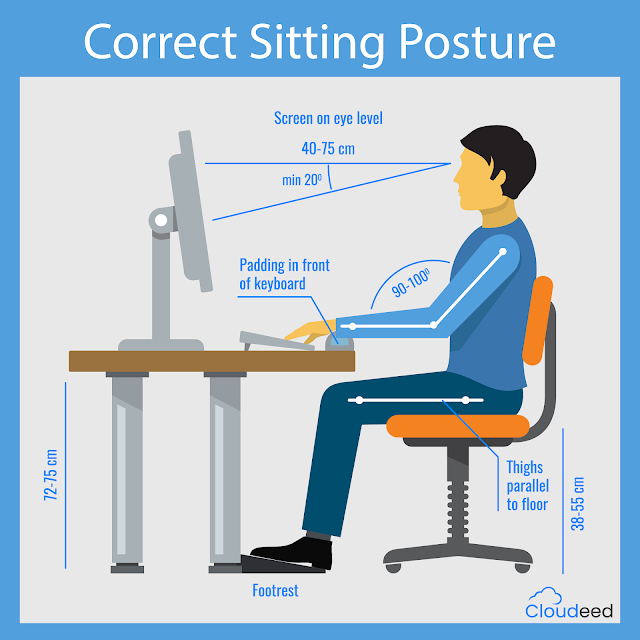Correct Sitting Posture
Sitting with a straight back and shoulders will not only improve a person’s physical health but can make them feel more confident.
Many people spend the majority of their day sitting down as they tend to sit when commuting, working in an office or studying, and relaxing at home. Prolonged sitting can cause a range of adverse health effects, including bad posture and back health.
Correct posture can help by:
- Reducing strain on the body during movement and exercise
- Reducing wear and tear on the joints, muscles, and ligaments
- Maintaining balance while moving and exercising
- Reducing the risk of muscle strain and overuse conditions
- Improving spine health
People who have to sit for extended periods at a desk because of their work or schooling need to take extra precautions to make sure they maintain a healthy posture and back.
When working at a computer for long periods, a person can help improve their sitting posture by:
- Keeping the monitor at arm’s length and no more than 2 inches above the natural line of sight
- Customizing workspaces, for example adding footrests, wrist pads, or backrests
- Using a standing desk to alternate between sitting and standing
- Using an ergonomic chair, a yoga ball, or a knee chair
- Trying out different keyboard and mouse types
- Using a headset for long calls or dictating to reduce neck strain
- Positioning the keyboard and mouse close together to avoid reaching
- Getting up and moving around occasionally, especially when experiencing any muscle or joint pain
Once in the correct position, try doing a mental check every 10 to 15 minutes to see if the posture has altered and then correct any changes.



Comments
Post a Comment